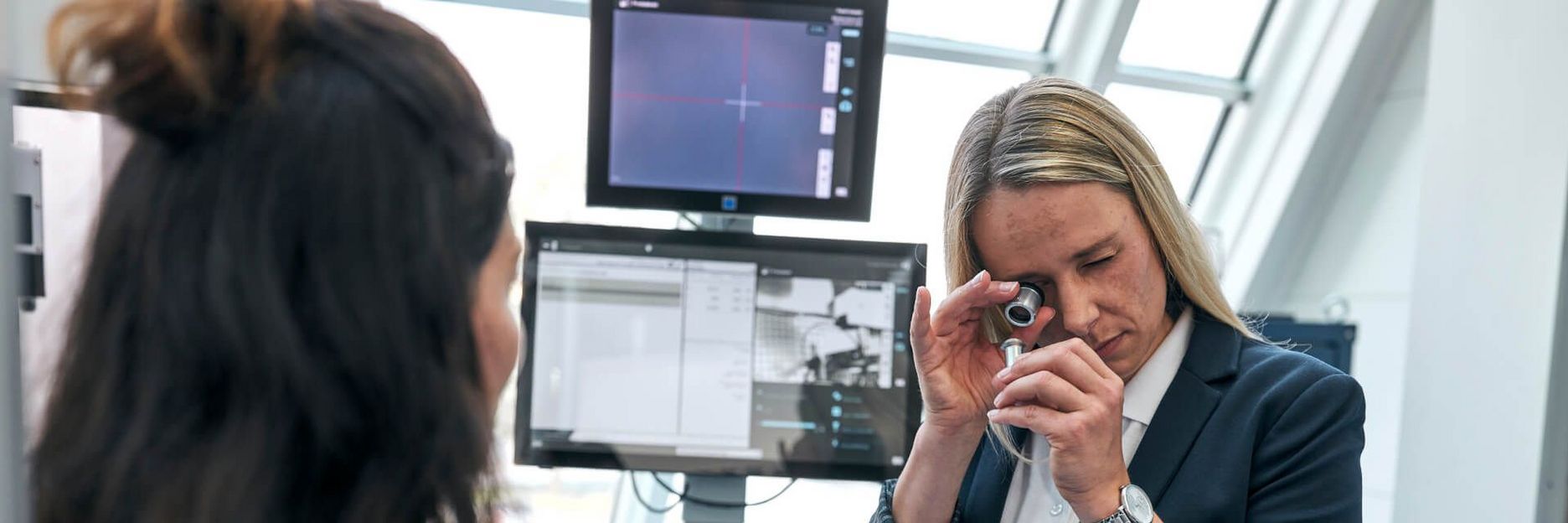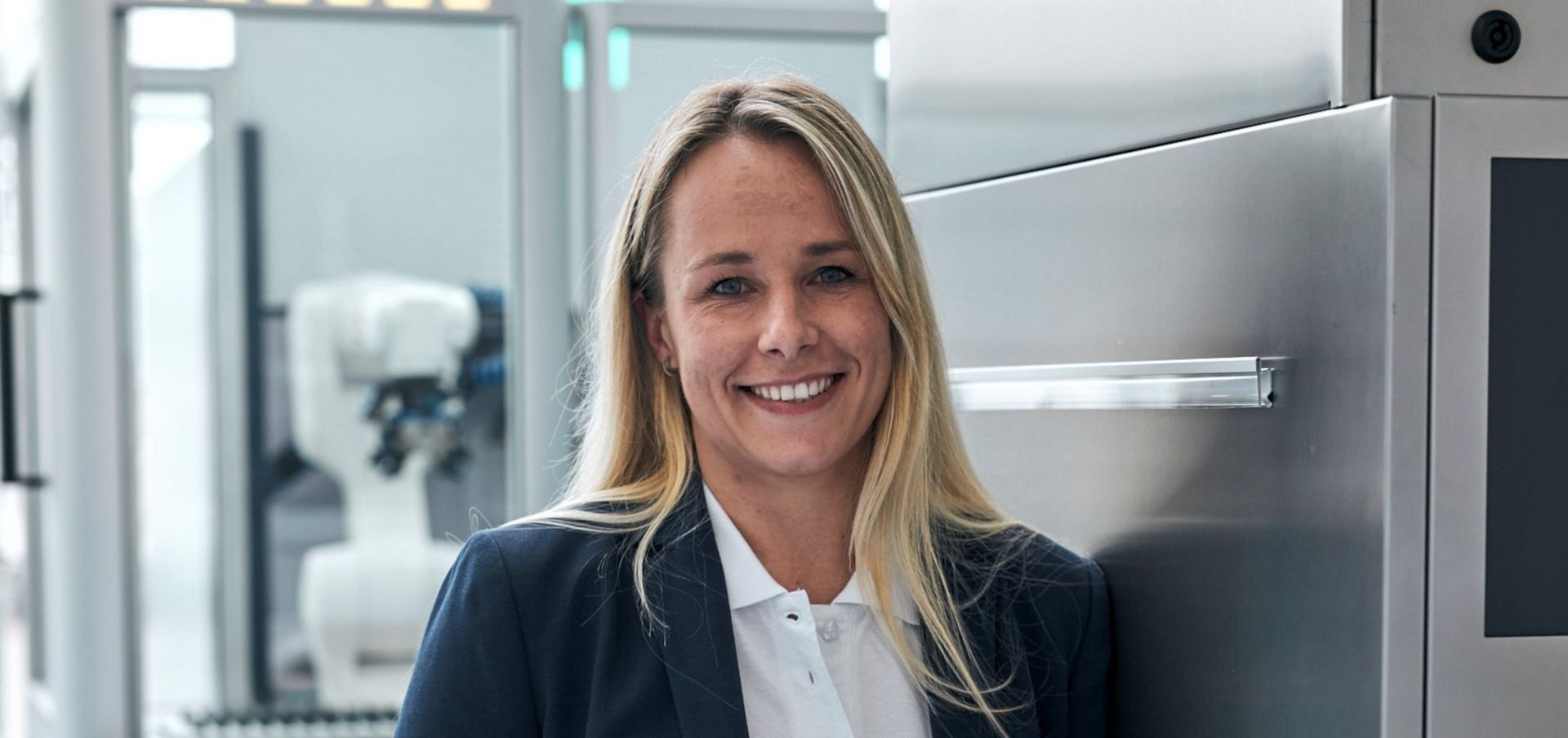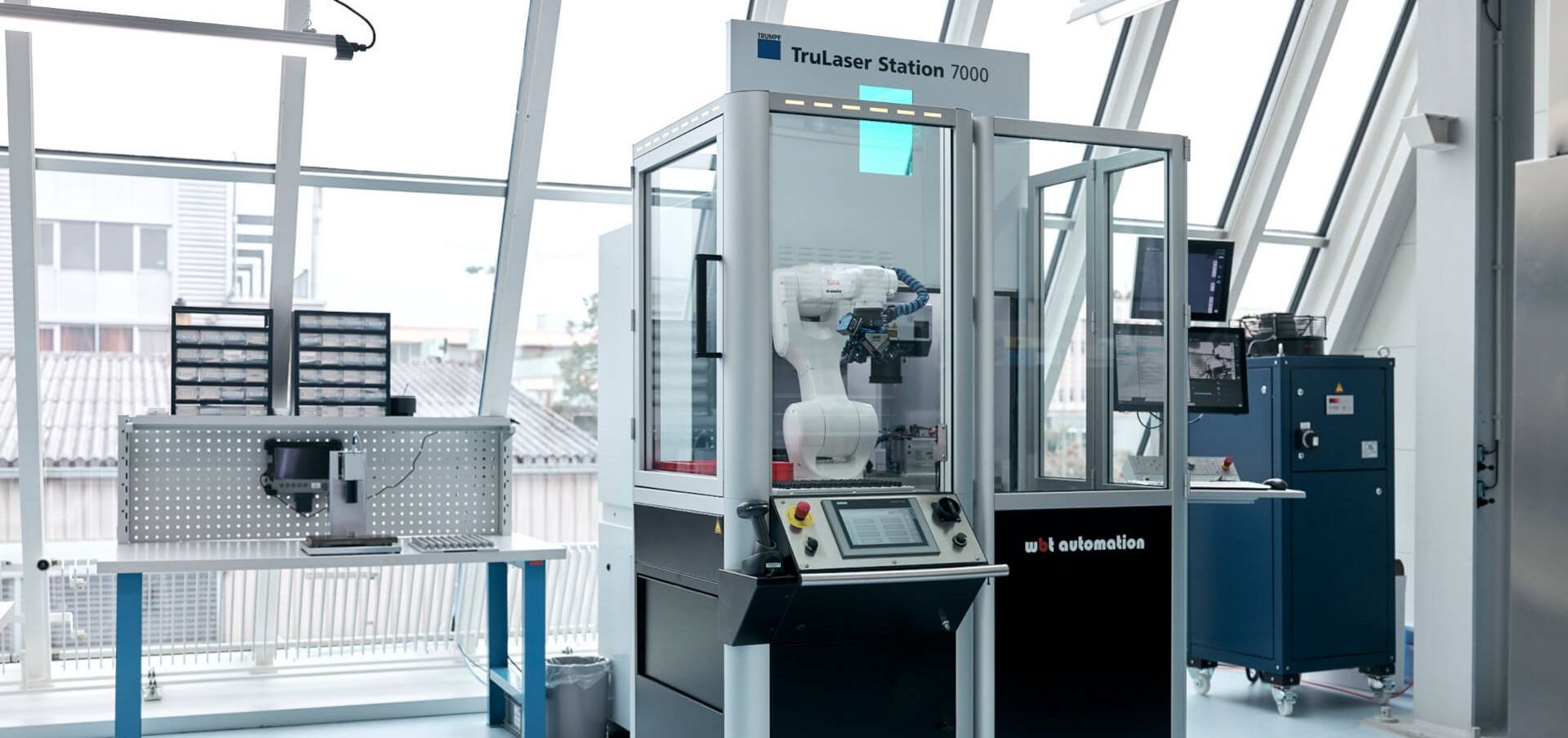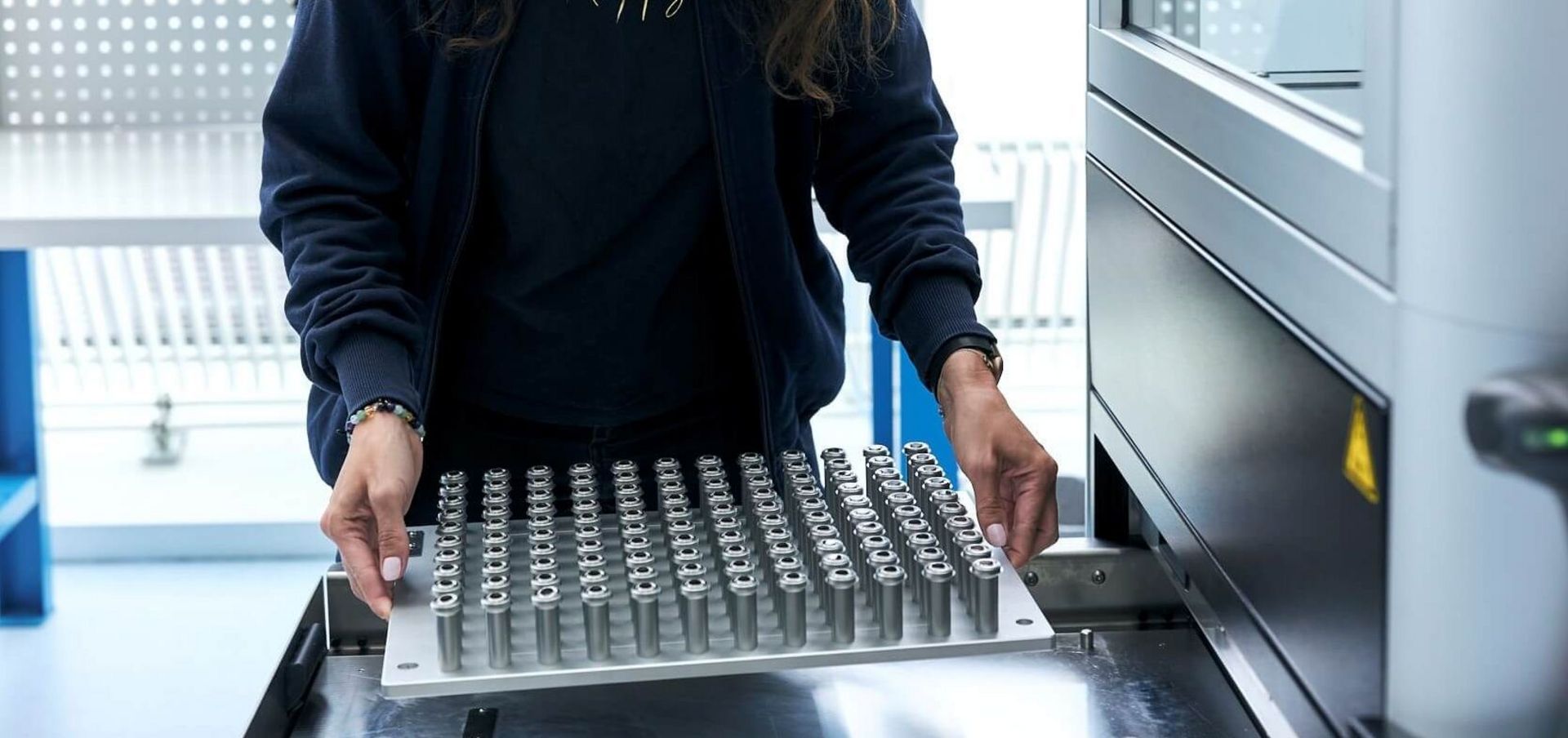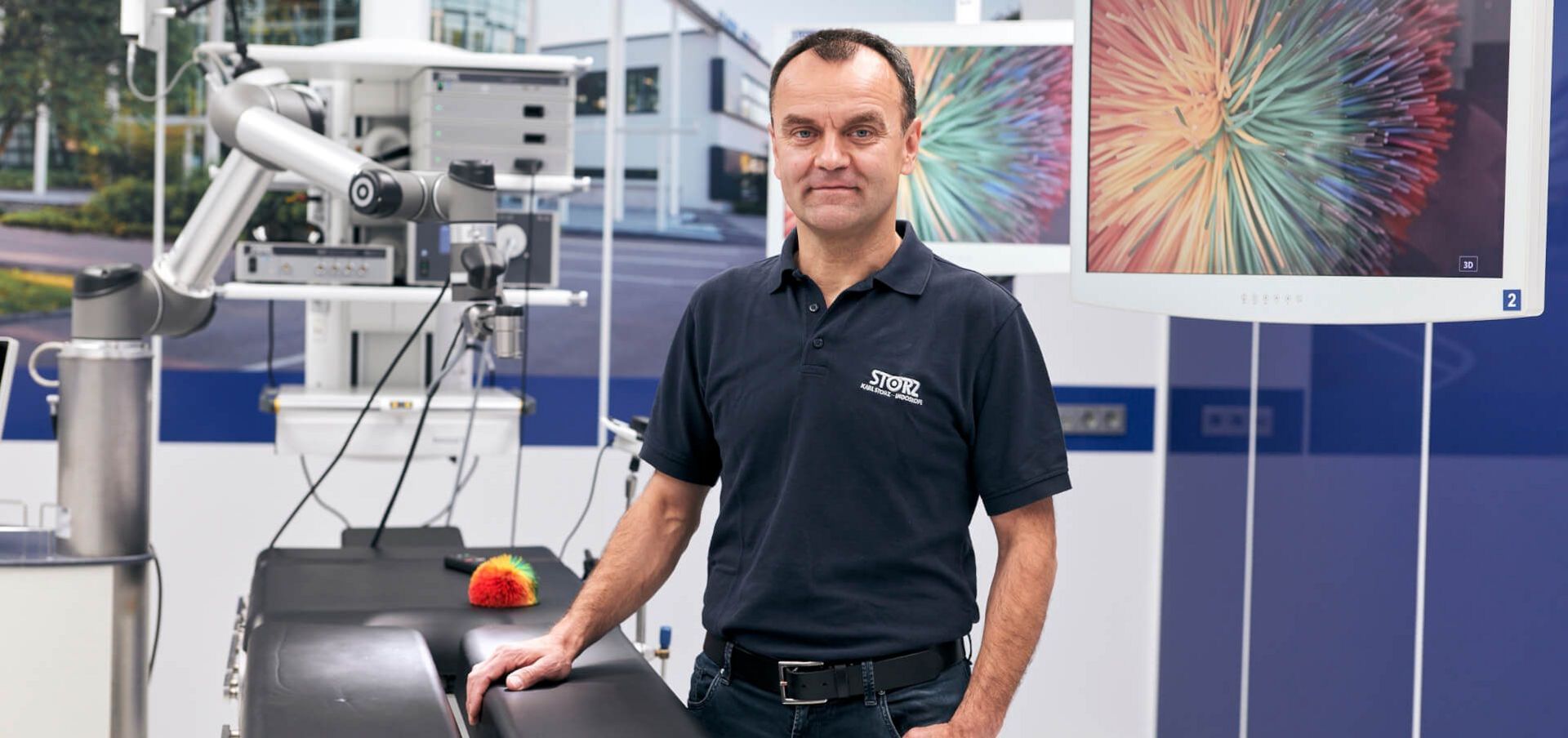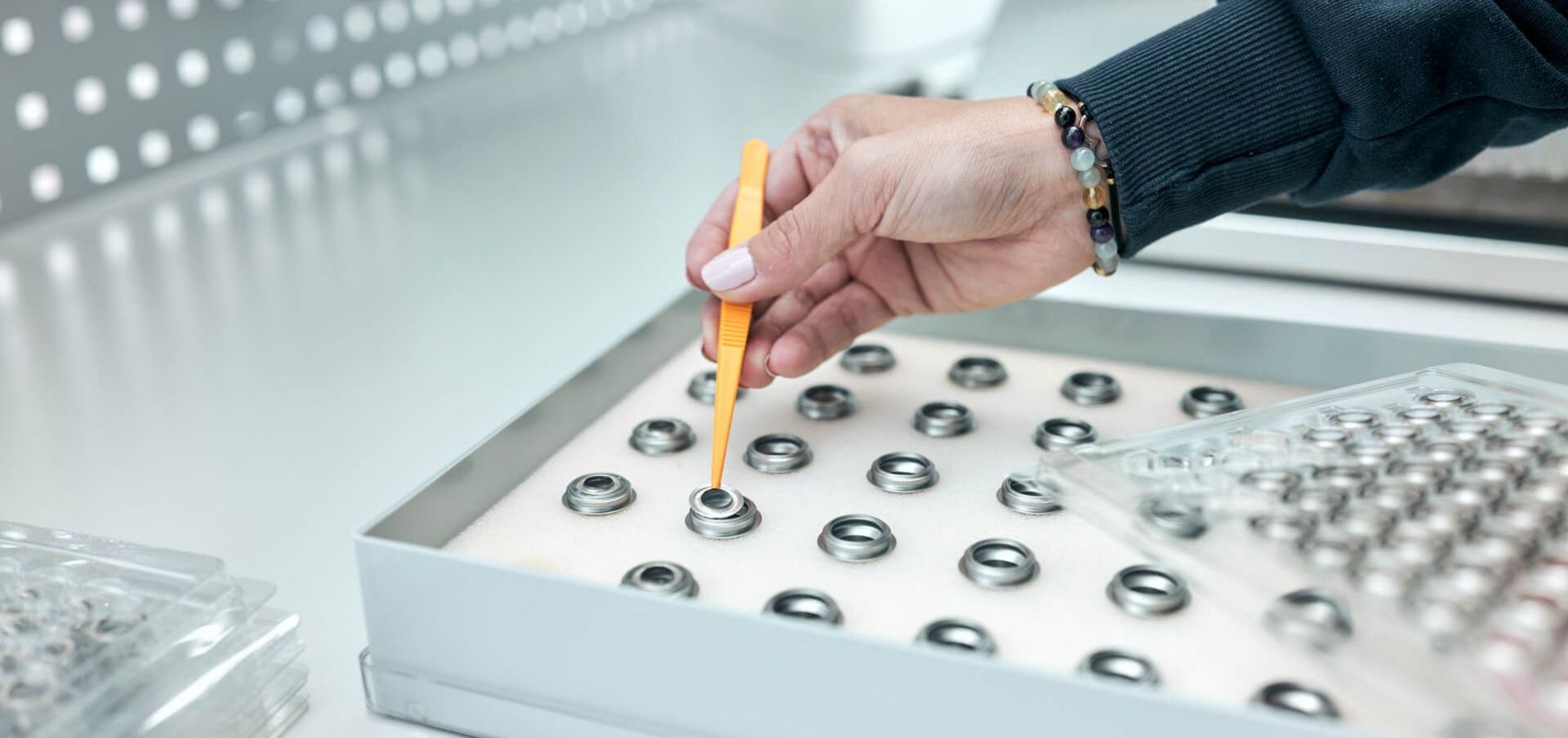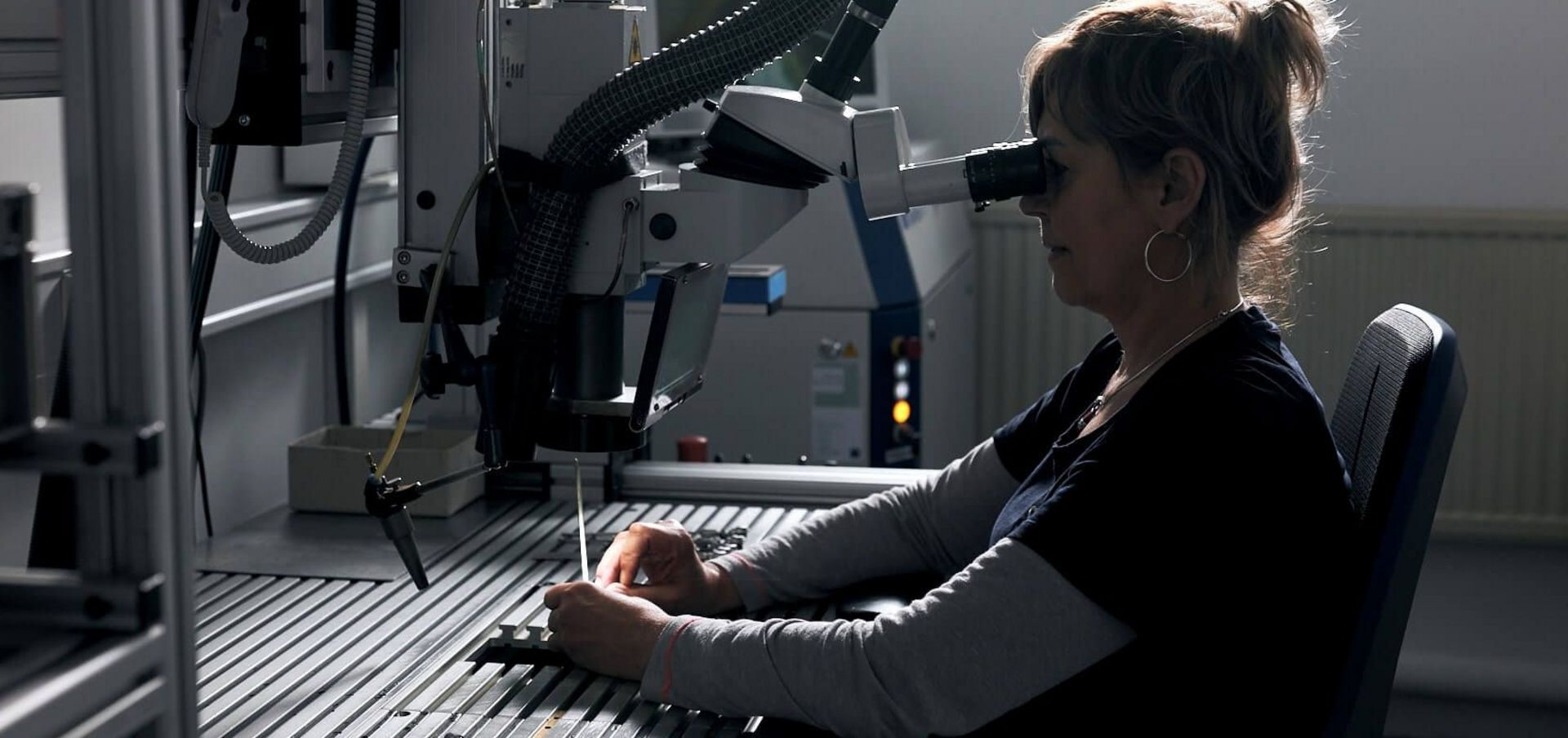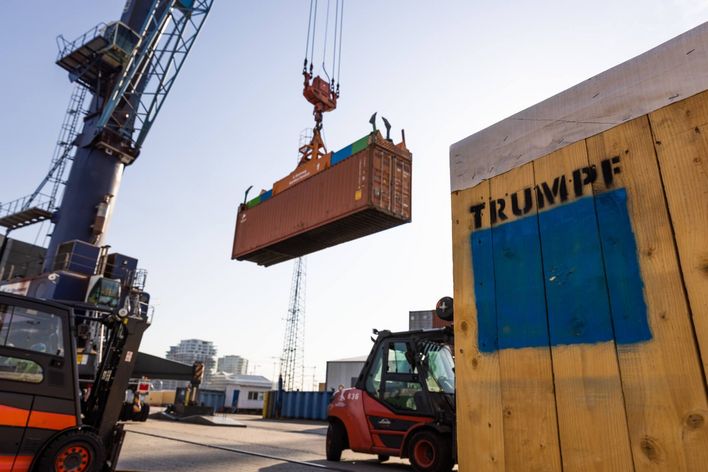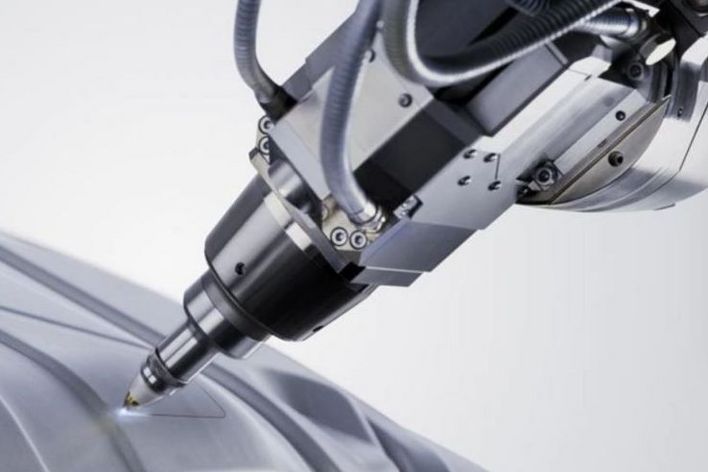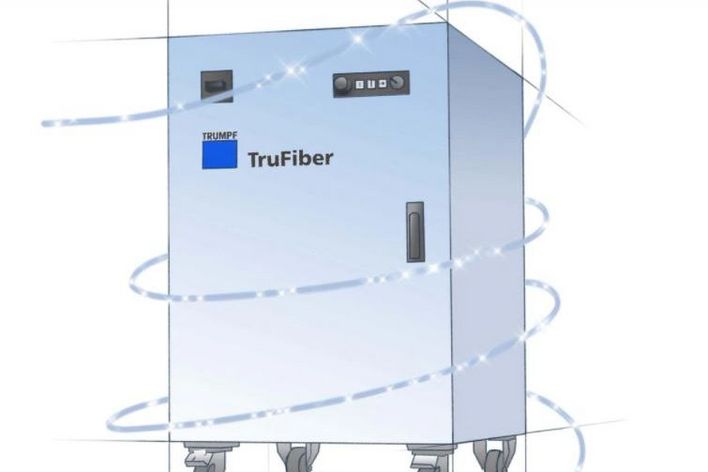A quick jerk, a short turn of the processing head, and the gripper at the end of the robot picks up two more workpieces. It places them on the workpiece carrier and moves back. The machine door closes and the laser inside begins to weld. Sarah Mühleck nods and walks away from the machine, smiling. "Running," she says with satisfaction. Mühleck is the Site Manager at medical technology specialist Karl Storz in Widnau, Switzerland, and the automated laser welding cell is her current project. The TruLaser Station 7000 has been in the production hall for a few time, welding eyepieces for medical endoscopes. The family-owned Karl Storz company specializes in these. "In Widnau, we manufacture components for optics, which means we work primarily with glass parts. The eyepiece is a component of the eyecup - the part of the endoscope through which the doctor later looks inside the body or the part with which endoscope camera is coupled. The eyepiece is made of stainless steel and sapphire components that must be joined together." The specialization of the site on a core competence is part of Karl Storz's concept. At the headquarters in Tuttlingen, the focus is on mechanical processing, precision optics and electronics; cameras and optical fibers are produced in the USA; video endoscopes and components are manufactured in Estonia; and in Widnau, Switzerland, the focus is on optical components - including eyepieces.
A question of parts
For them, Mühleck now has a modern laser welding system with a mobile robot cell. For a company in the medical sector, this is anything but standard. After all, a lot of manual work is still the order of the day there. This is also confirmed by her colleague Wolfgang Karl. In Tuttlingen, he is the expert for all laser welding, laser cutting and laser marking processes, having been with the company for over 40 years now. He says, "Visitors are often surprised at how much manual work is still involved in our products. But of course we also weld with modern 5-axis laser welding systems. Components with relatively thick walls are of course machined. But there are always components that are very thin and relatively small. Here, the human operator can simply react better than the machine, because he is more sensitive and flexible." He believes that the trend in medical technology is also moving toward automation, but one must always carefully consider whether and how this makes sense. Sarah Mühleck agrees and adds: "Unlike in the automotive industry, for example, we have few identical parts and instead an enormous product variance with, at the same time, smaller quantities. This makes for a high level of complexity, which makes automation more difficult to implement, and often people simply work faster in this situation."
Mühleck says that it is not possible to determine the point at which an automated machine pays off based solely on the number of pieces: "It depends very much on the component. It depends on which operation is carried out manually and whether other products can also be run on the machine," he says. It was quickly clear to Mühleck and her team that the welding of the eyepiece in Widnau could be automated. "This is a repetitive activity, and the same movements are very tedious for the employees. Besides, we prefer to use the knowledge of our skilled workers for tricky tasks and not for the repetitive loading of a system."
Absolutely sealed and extremely fast
It was also clear that production should take place on a TRUMPF machine in the future. The expertise of colleague Wolfgang Karl tipped the scales: "We have been working in Tuttlingen as a test customer with a TruLaser Station 7000 for several months and have had good experience with it," he reports. The Swiss team was quickly convinced - also by the compactness of the system. Mühleck explains, "For us, the decisive factor was that we could get the machine into the freight elevator to bring it into production. It was a matter of centimeters. Otherwise, we would have had to open the facade. We're glad we were able to avoid that."
The most important criterion for the welded parts: the seal. Mühleck explains: "No moisture may penetrate the endoscope. Our reusable products are used several times. During steam sterilization after a medical procedure, the endoscopes are exposed to high temperatures and pressures. They have to withstand these." The demands on the weld seam were correspondingly high. The stainless-steel parts are less than one millimeter thick, and the welding depth and weld width are therefore small. The Karl Storz project team chose a fiber-based TruFiber 500 solid-state laser from TRUMPF with 500 watts of power as the laser source. This is precise enough to reliably weld the filigree parts. In addition to quality and speed, efficiency also played an important role for Wolfgang Karl in choosing the laser. "With the new laser, we have reduced our production time per component from ten to one and a half seconds. So we are significantly faster. We also consume much less energy," says Karl.
Drawer system with large storage volume
Automation for the TruLaser Station 7000 is provided by wbt automation GmbH & Co. KG. The small company in the Swabian town of Gosheim was able to deliver what Karl Storz wanted: an automation solution with maximum flexibility. This is fulfilled by the MRC flextray robot cell from wbt. It is mobile and can be docked to the front of the TRUMPF laser welding machine. There, it then takes over loading and unloading. Sarah Mühleck explains, "The cell is equipped with a workpiece storage unit with four drawers. It holds a total of eight workpiece carriers with 960 workpieces. During the welding process, we can open the drawers on the other side of the robotic cell, remove the finished welded eyepieces and load them with the next ones."
Gripping system with sensitivity
The eyepieces consist of a stainless-steel sleeve onto which the laser welds a ring with a small lens. Due to the filigree parts and the requirements for the seal of the weld seam, maximum precision is required during handling. A precisely measured robot system from Kuka is used for this purpose. wbt Managing Director Joachim Burkert says: "Producing the project-specific accuracy was a very demanding task, which we were able to implement successfully. We work here with a quadruple gripper, which means that we insert two unprocessed parts and simultaneously remove two finished welded ones in one single work step." To prevent the lens from slipping during insertion, wbt has integrated a vacuum suction bellows. When the gripper grips the sleeve, the bellows presses the lens down with little force and places the package on the workpiece carrier. With the aid of a small blast of air, the bellows detaches from the lens and the robot moves away. It uses a laser sensor to check whether all the components have been placed correctly. On its way out, it takes two finished parts with it and places them back in the drawer. The machine door then closes and the welding process for the inserted parts starts inside.
The laser first fixes the stainless-steel ring to the sleeve with three small welding spots to prevent stresses in the material and deformation of the ring. Then it welds it in place. "We also had to adapt the gripping system and the workpiece carriers to the many variants that Karl Storz welds on the line. In some cases, the differences are only in the tenth range," says Burkert. "For the fast processing of smaller quantities, the cell can be undocked and docked again within a minute. Robots and grippers can also be swapped.”
A project for the future
For Wolfgang Karl, the project in Widnau shows where medical technology can go in terms of automation. “We will still have to do a lot of welding by hand in the future, but will automate those operations that can be reasonably automated. With the flexible robotic cell, we can do both on a single machine." After the first time with the new laser welding system and automation, his colleague Sarah Mühleck is also positive: "The TruLaser Station 7000 works absolutely reliably; we have had no breakdowns or malfunctions so far. That is essential, because a machine downtime also means a production stop for us. So far, I've actually noticed very little from the system - and that's a pretty good sign," she says and laughs.

